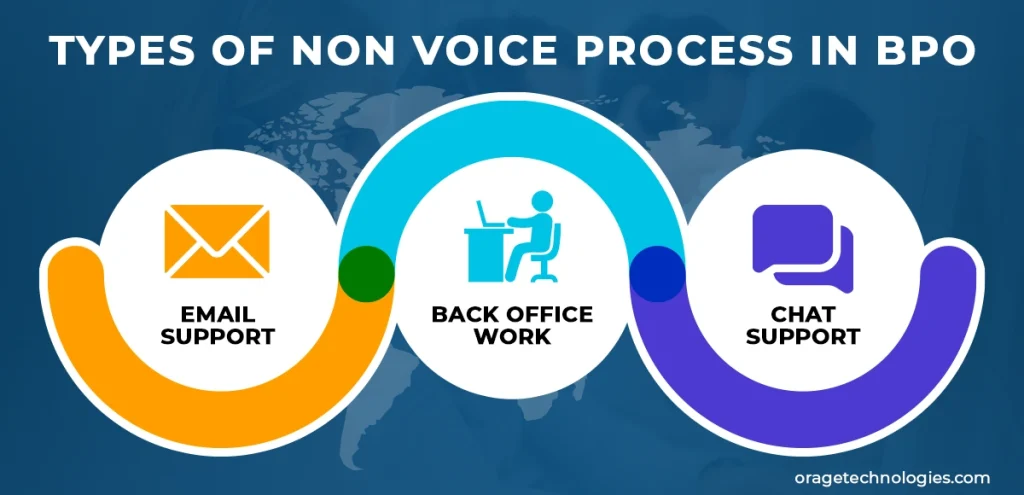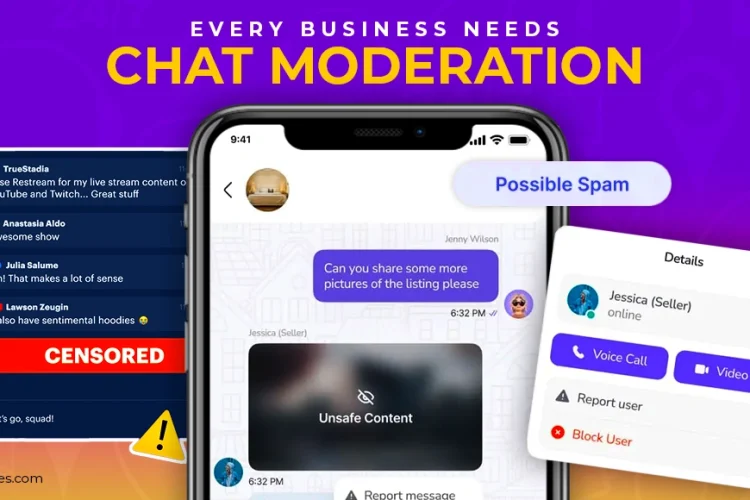
Divya Stuti, with over 5 years of experience in Digital Marketing & Content Writing, has a knack for turning complex Marketing strategies, trends, and jargon...
Customer support is one of the primary Business Process Outsourcing services, and non-voice processes constitute a big chunk of BPO. Non-voice process means handling customers without any kind of verbal interaction, while the voice process includes interaction with customers over phone calls.
Both Voice and Non-Voice process plays an essential role in BPO. A recent study has stated that 41% of customers prefer live chat, 23% choose email, and only 32% use phone calls for support services. Moreover, 68% of customers choose text over a call in billing matters. Let’s take a deeper look into what non-voice process means in BPO, its types, and the differences between voice and non-voice process.
What is a Non-Voice Process?
Non voice process means providing customer support without the involvement of calls or any verbal assistance. In this process, service providers use emails, SMS, and chat to address customer queries and issues.
Non-voice BPO jobs require a good command of writing and knowledge of products or services to resolve problems quickly. In some non-voice processes, such as back office work, service providers don’t have any interaction with the customers. They handle data without direct communication.
Types of Non-Voice Process in BPO

While Business Process Outsourcing is often mistaken for a call center, it is much more than that. It can be divided into voice and non-voice processes. Further, it can be divided into various subcategories. The non-voice processes can be of three types:
1. Email Support
Email support is one of the most used non-voice processes, as most customers choose email for help and issue resolution. It provides 24/7 support and is the perfect way to solve complex problems. A clear email helps in documentation for future reference and works on a ticket system.
Most of the time, companies use email support along with chat support to ensure alternatives for customer support solutions.
2. Back Office Work
Another type of BPO, non-voice process, is back-office work. Unlike other non-voice BPO jobs, it does not involve direct interaction with the customers. Some of its common works involve:
- Data entry
- HR tasks
- Managing accounts and databases
This work may require spreadsheets and other software skills. Companies outsource the back office jobs to cut time, cost, and boost efficiency.
3. Chat Support
Chat support is a fast and smart non-voice process. It is a form of texting customers in real-time. Live chat support is most accessible, and the customer gets a response very quickly. Thus, it is one of the most used nonvoice processes. Customers put their queries and issues in the chat, and an agent is assigned to answer those questions.
Chat can help in various processes, such as:
- New orders
- Product Help
- General Support
Nowadays, companies are choosing chatbots for the initial replies, and if the issue is complex, it is passed on to an agent. Moreover, this process also uses performance tools such as CSAT (Customer Satisfaction Score), NPS (Net Promoter Score), and AWT (Average Wait Time) to help in the performance tracking of agents.
Difference Between Voice and Non-Voice Process in BPO
The two types of business process outsourcing differ greatly in various aspects. To understand the differences better, let’s first look at the voice and non-voice process meaning.
Voice process in BPO refers to the service that requires verbal interaction with the customers, mostly on calls. It can be of various types, such as the inbound voice process and the outbound voice process.
While non-voice process in BPO is all about customer service, which does not require verbal communication. The customer support is offered via chat and email. Moreover, this process also serves different back office works such as data entry, accounts, and database management, etc.
Thus, both of them have different modes and tasks; here is a detailed comparison.
| Feature | Voice Process | Non Voice Process |
| Mode | Verbal | Written |
| Speed | Fast | May Vary |
| Tools | Calls | Email, Chat, SMS |
| Examples | Call centers | Chat support, Email support |
Both are essential parts of business process outsourcing, but they serve different purposes. For instance, fast issue resolution can be done through the voice process. For records and step-by-step help, non-voice processes such as chat and emails are preferred.
Conclusion
People often limit non voice processes to typing jobs. However, it is a wholesome way of offering end-to-end service using text and chat. With a growing preference for texts and chats, the non voice BPOs are gaining wider importance.
Moreover, non-voice process jobs do not require speaking skills. Anyone can apply for this role.
FAQs
A non-voice process means handling customer service without speaking.
Voice involves phone calls; non-voice means written communication like email or chat.
Yes, this job is perfect for freshers since you don’t need any degree or qualification except good writing and typing skills.
You need strong writing skills, quick thinking, and product knowledge.
Yes, it is. Chat support is one of the main types of non voice processes.
They are faster, cost-effective, and preferred by modern customers. You can switch between modes anytime by simply typing the mode name.

Divya Stuti, with over 5 years of experience in Digital Marketing & Content Writing, has a knack for turning complex Marketing strategies, trends, and jargon into interesting and easy to digest blog posts. Whether she’s breaking down the SEO, Social Media or decoding campaigns, Divya knows how to make marketing feel exciting and easy to understand. Armed with a sharp eye for strategy and a storyteller’s instinct, she writes with clarity, creativity, and just the right dose of wit.
More Posts

